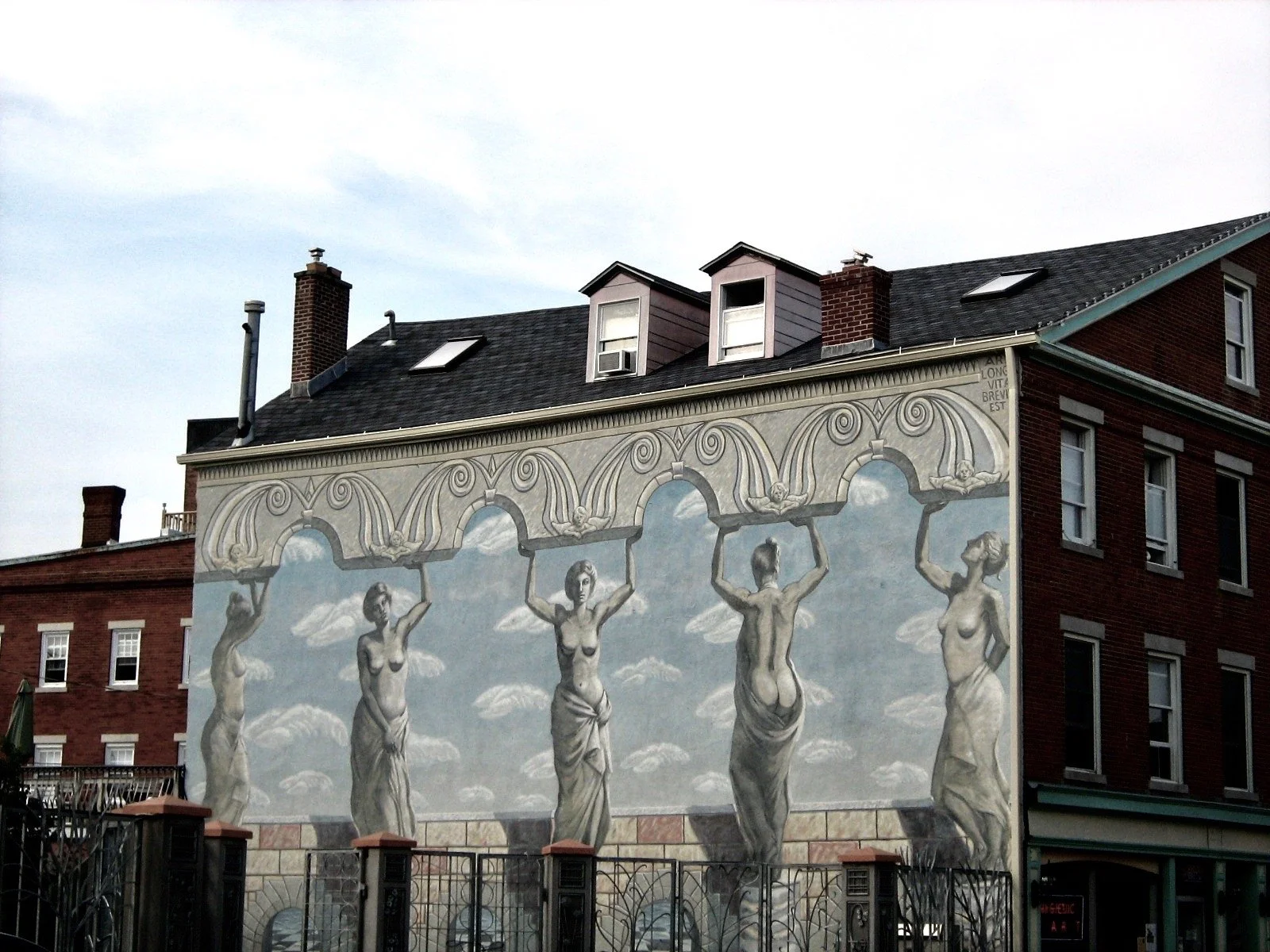What we learn from the Ghosts of Brands Past, Present, and Future
We’re never far away from the next haunting.
What do a futuristic telephone, a fallen unicorn, and the very idea of “brand” have in common? They are all haunted.
We treat brand as something delicate, but it’s a multibillion-dollar business that for some, drives culture to positive change but leaves others in a valley of dead angry birds.
Like Dickens’s Scrooge, if you were visited by the Ghosts of Your Brand’s Past, Present, and Future, would what you learned change the way you do business?
The Ghost of Brands Past
"I am the Ghost of Christmas Past," said the Spirit. "Long Past?"
The Ghost of Brands Past appears in flickering memories of what once was. These are the brands that haunted the marketplace, dominant forces that seemed invincible until they weren’t. They teach us the most painful lessons because they show us how quickly greatness can decay.
The fatal flaws of past Ghosts
Failure to adapt: The brand was a leader but missed a critical technological or cultural shift. Kodak invented the digital camera but couldn’t kill its film cash cow.
Loss of authenticity: It chased trends or cut corners, eroding the original promise. MTV pivoted from music television to reality TV and never found its way back.
A broken promise: The product simply didn't work as advertised. Theranos promised revolutionary blood testing but delivered fraudulent results.
Irrelevant value proposition: The problem the brand originally solved no longer exists. Blockbuster solved “How do I watch movies at home?” until Netflix asked “Why leave home at all?”
Brands to revive (positive ghosts)
Pan Am: The ghost of adventure and luxury travel in an age of cramped economy flights
Polaroid: Instant gratification in our digital world—already partially revived
Brands to mummify (negative ghosts)
DeLorean: Famous only for movie appearances, not automotive excellence
Theranos: The ghost of broken promises and fraudulent innovation
The Ghost of Brands Present
The Ghost of Brands Present looms over us—brands caught in the liminal space between what they were and what they must become. These brands are actively wrestling with their identity, fighting to stay relevant in real-time.
Jaguar: The Heritage Trap
Is it the gentleman’s British touring car of the 1960s or a Tesla competitor? The Ghost of the Past (leather, wood, tradition) battles the Ghost of the Future (electric, minimal, sustainable). By trying to honor both, it risks satisfying neither.Meta: The Midlife Crisis
Facebook isn’t dead, but it’s haunted by every teenager who’s migrated to TikTok. The rebrand to Meta feels like a $13 billion attempt to exorcise the ghost of “social media for your parents.” The metaverse bet is less about innovation and more about identity crisis.Google: The Complacency Ghost
Twenty years of search dominance created the ghost of invincibility. Then ChatGPT appeared overnight and suddenly Google looked like it was standing still. The ghost of past success often comes in the form of a lack of innovation.Casper: The Hype Hangover
The mattress-in-a-box revolution that Casper pioneered became its own ghost. Venture capital expectations, copycat competitors, and the reality that mattresses are...just mattresses.
The Ghost of Brands Future
"Ghost of the Future!" he exclaimed, "I fear you more than any spectre I have seen."
The Ghost of Brands Future is the most terrifying because it shows us not what was or what is, but what will be if we refuse to change. This ghost will wear the consequences of our present choices.
The WeWork prophecy
WeWork’s complete story is a perfect vision of what the Ghost of Brands Future looks like when it arrives:
The rise: Brilliant disruption + charismatic leadership + venture capital rocket fuel = $47 billion valuation
The corruption: Mission creep + cult of personality + growth at any cost
The fall: Business model fantasy meets reality + founder scandal + investor exodus + brand collapse
The haunting: What remains is a cautionary tale that haunts every unicorn pitch deck
The Future Ghost’s warning signs
Valuation based on story, not fundamentals
“Community” and “disruption" used to mask unprofitable unit economics
Culture built on hype rather than substance
Other Future Ghosts in formation
AI brands promising human obsolescence without human insight
Crypto projects solving problems that don't exist
Sustainability brands that are green in marketing only
The Ghost of Brands Future reveals the uncomfortable truth: every brand believes it’s the exception to the rules that destroyed its predecessors.
Scrooge’s transformation: becoming the ghost buster
"I will honour Christmas in my heart, and try to keep it all the year."
Like Scrooge, brands can transform—but only through honest confrontation with their ghosts. The brands that survive are those that become ghost busters, exorcising their own demons before they become fatal.
The Barbie blueprint
Today’s Barbie is more culturally significant now than she’s been in decades. But Barbie was haunted by decades of criticism—unrealistic beauty standards, outdated gender roles, cultural insensitivity. She and Mattel fought her way back:
Acknowledged the ghosts (diversified body types, careers, ethnicities)
Faced them directly (the 2023 movie confronted every criticism head-on)
Transformed the haunting into strength (Barbie's complicated legacy became her relevance)
Don’t miss the cautionary tale
What do a futuristic telephone promised in 1969, a $47 billion co-working company, and the very idea of "brand" have in common?
They’re all haunted by the gap between promise and reality, between what we say we are and what we actually deliver. But ghosts aren't just harbingers of doom—they’re opportunities for transformation. The brands that listen to their ghosts are the ones that avoid becoming cautionary tales.
